Once a brownfield, this site on Milwaukee's north side has become an environmental wonderland
What once was a barren, contaminated brownfield near the 30th Street Industrial Corridor is now a lush greenspace with native plants, trees and walking paths.
But the three-acre site and its flora do more than attract birds and pollinators. It's an open-air classroom and environmental laboratory to help residents, students and even researchers learn about stormwater management and sustainable green technologies.
That’s the premise of Green Tech Station, 4101 N. 31st St.
It was developed through a partnership between the Northwest Side Community Development Corp.; Reflo, a nonprofit focused on sustainable water use; the Milwaukee Metropolitan Sewerage District; and the city of Milwaukee.
The city acquired the site, which once contained above-ground oil storage tanks and a truck fueling station in 2007. In 2015, it got an Environmental Protection Agency grant to clean up the site. But the property's irregular shape and a sewer easement made development difficult.
So, the vision was to create an environmental and educational site based on green technology, said Sarah Bregant, NWSCDC’s planning and community development manager.
It'd be a demonstration site that explores and showcases green technologies, like bioswales — landscape features that collect polluted stormwater, soak it into the ground and filter out pollution — and deep-rooted native plants that can filter and reduce stormwater runoff.
What to know about Green Tech Station
Now, the site contains four bioswales, more than 400 trees, a 20,000-gallon underground cistern, native prairie plants and a constructed wetland. Combined, these elements help filter and capture more than 115,000 gallons of stormwater that otherwise might find its way into basements or flood city streets.
“Other cities are dealing with hurricanes and other natural disasters," Bregant said. "Our main issue in this neighborhood would be flooding."
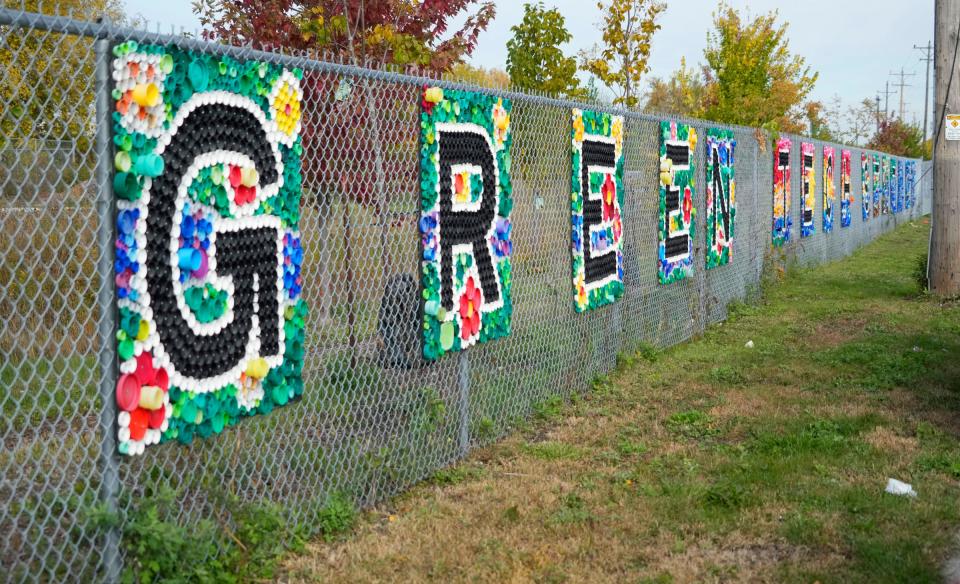
In 2010, she noted, a heavy downpour left many area residents with seven feet of water in their basements.
But using green infrastructure like bioswales and a cistern can capture and divert some of that stormwater runoff, reducing the stress on Jones Island, the Milwaukee Metropolitan Sewerage District’s water reclamation plant.
Stormwater management isn't the most exciting topic of conversation, Bregant admitted, but using green technology to manage it benefits both the environment and the community.
Here’s how it works: the water journey
During a rainstorm, water enters the site through two curb inlets from the street. The water then enters the bioswales. The bioswales and wetlands “treat” or filter water contaminants such as microplastics coming off the street.
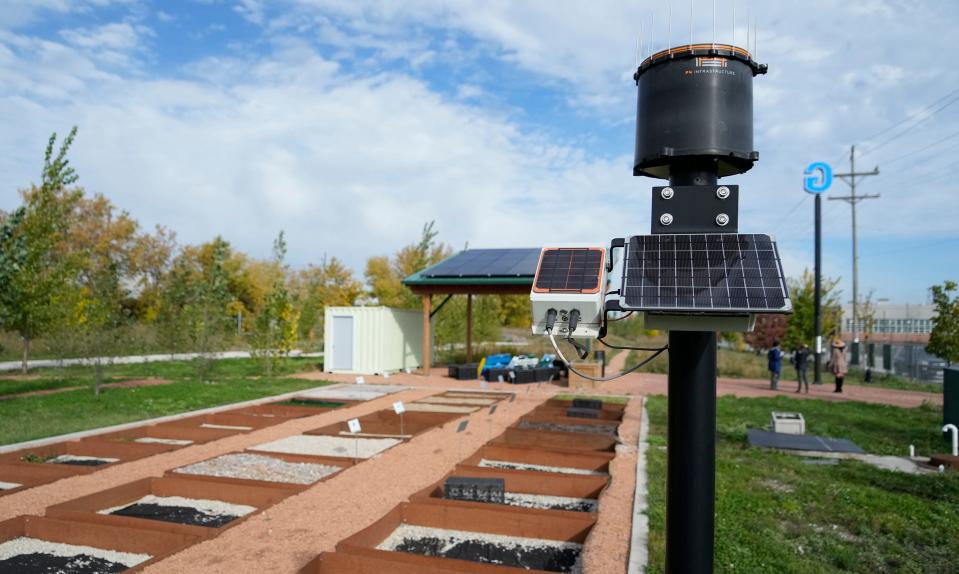
“There is a water quality and a water quantity effect that is happening when green infrastructure is in place,” said Lisa Neeb, Reflo’s green and health schools program manager.
Then gravity brings the stormwater into a vault system. There it’s pumped into the site's 20,000-gallon cistern, about the size of a school bus. The cistern acts as a holding well that feeds its drip irrigation system that waters the trees and plants.
The benefits: Increase urban biodiversity while reducing urban heat islands
“The co-benefits of green infrastructures are really strong,” Neeb said.
One benefit is reducing the heat island effect. Most urban areas have more concrete than trees. The lack of tree canopy generates higher surface temperatures.
Instead of asphalt and concrete pavement, which absorb and reflect the sun’s heat, planting trees not only soaks up and filters rainwater but also provides shade to reduce temperatures, Neeb said.

It also increases urban biodiversity. The trees and the bioswales that contain native plants create a natural habitat that supports pollinators and wildlife. The bioswales create little pockets of nature in places one doesn’t expect, like medians along boulevards, Neeb said.
“Where else in the inner city can you see burr oak or red oak trees?” said Danitra Jones, NWSCDC’s economic development coordinator.
“Not only are you bringing back butterflies and bees that are native to Wisconsin, but we get to have that in the inner city as well. Everything works together, from the basins to the bioswales to nature.”
Test plaza: A research lab for side-by-side experiments
The site doubles as a research lab for green infrastructure and sustainable technology. The U.S. Geological Survey and Marquette University both are running experiments at the site on water quality.
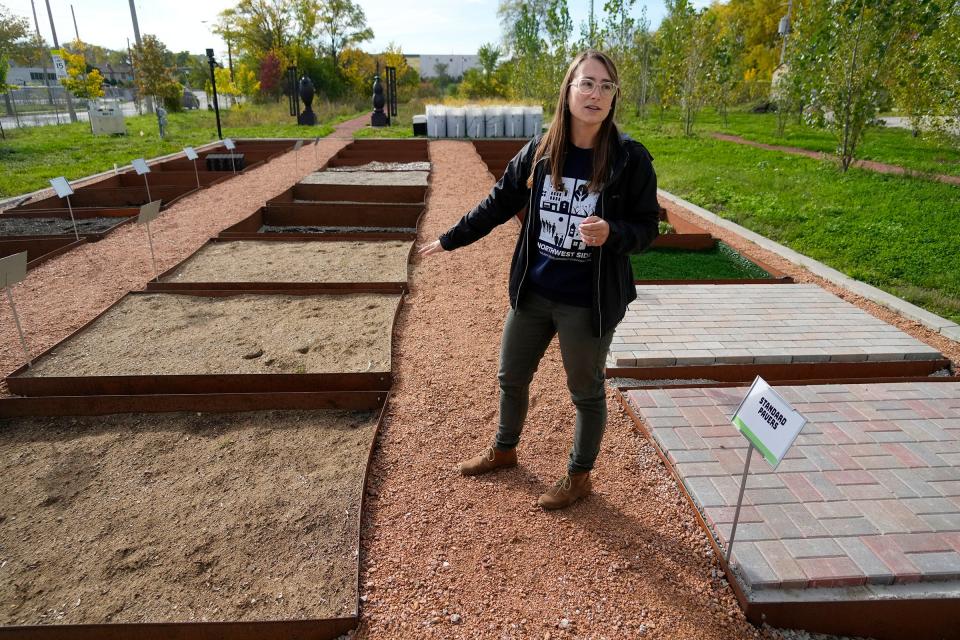
Green Tech Station features a test plaza where researchers from businesses or academia can run side-by-side experiments. The site has several test cells to study water infiltration on different types of permeable surfaces including artificial turf, green roofs and sod.
The test plaza, Bregant said, creates that “body of knowledge” on sustainable and green infrastructure. That’s significant for Milwaukee since it’s becoming a hub for the water technology industry.
Climate resiliency: How residents and students can do their part
The site also helps students and residents learn about green infrastructure. Students learn how to recognize bioswales and, through a mini-replica of the site, they learn how they work.
Students even learn how certain trees break down chemicals and contaminants through a process called phytoremediation.
“Kids learn that trees can do that,” Neeb said. “There are plants specifically made to help clean up the earth.”
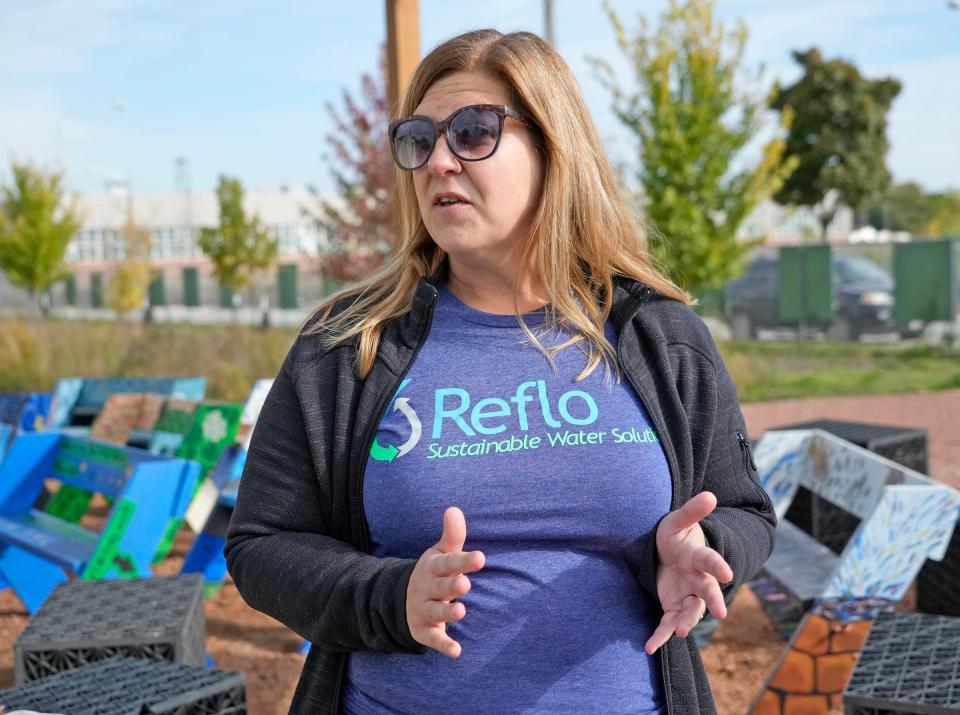
The site exposes youth to nature, how greenspaces are better than concrete playouts, and how they can help with climate change.
“We can help kids feel more comfortable being outside, seeing a bee or a butterfly or another pollinator that they might be nervous about,” Neeb said, “and help them … appreciate why there’s different kinds of flowers, different kinds of trees … and how that all plays together.”
Residents too can learn ways they can reduce stormwater runoff. Installing rain barrels or planting rain gardens of deep-rooted native plants off their homes’ downspouts are simple ways residents can manage stormwater.
The site demonstrates things residents can do “in (their) own yard to help reduce flood risk,” Bregant said.
Art and beautification: Water has no enemy
The NWSCDC worked with local artists and the community to develop artwork for the site. The goal was to have artwork that represents the Black community and pay homage to the site’s green infrastructure.
The site features the first of several WaterMarkers to be installed throughout the city. They act as an alert system urging residents to curtail water usage during heavy rains. Topped with the letter “G,” it pulsates during heavy rains.
But the “G” symbolizes the grittiness of the Garden Homes neighborhood, where Green Tech Station is located, and how the site has now become a gathering place for residents.
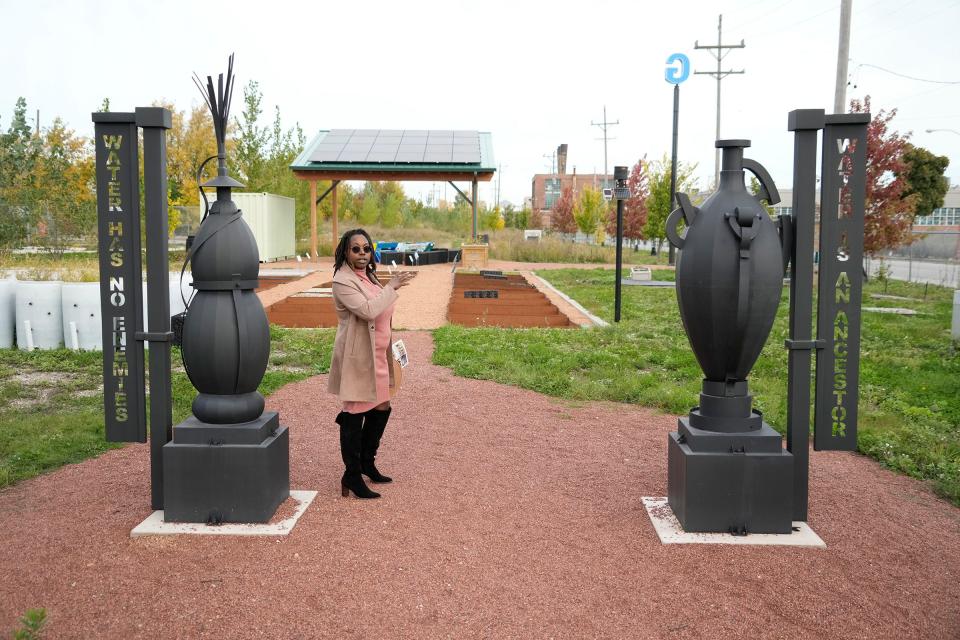
A 16-panel mosaic that spells out the site’s name adorns a fence along 31st Street. The mosaic is made from nearly 12,000 recycled bottle tops, some of which came during neighborhood cleanups. It features a growing ribbon of blue that signifies Lincoln Creek as it flows into the Milwaukee River and then into Lake Michigan.
Also, two black metal African water vessels stand sentinel on the site. Each vessel represents an African proverb: “Water has no enemy" and “Water is our ancestor.” The artwork, Jones said, represents the environment, and the neighborhood while telling the community's story.
“Art is part of the environment," she said. "So, it all kind of flows together with art and nature."
This article originally appeared on Milwaukee Journal Sentinel: Milwaukee's Green Tech Station is an environmental wonderland

